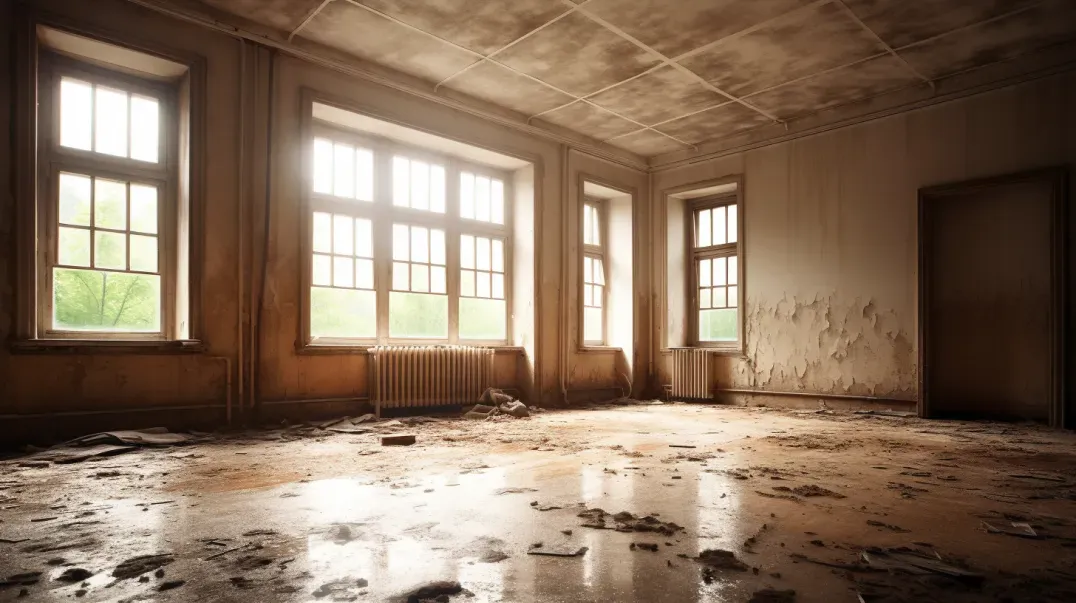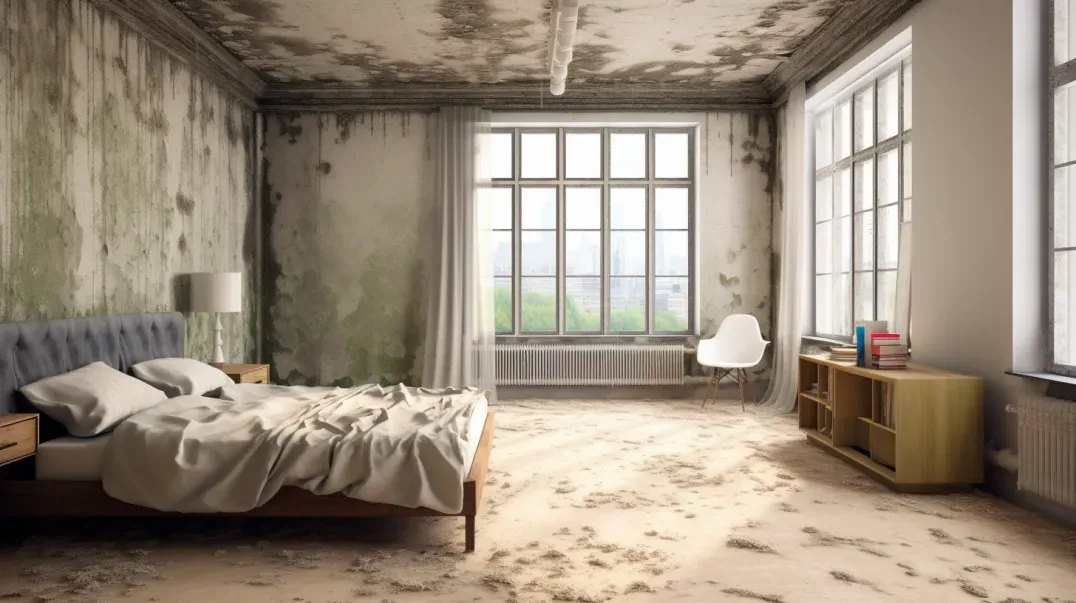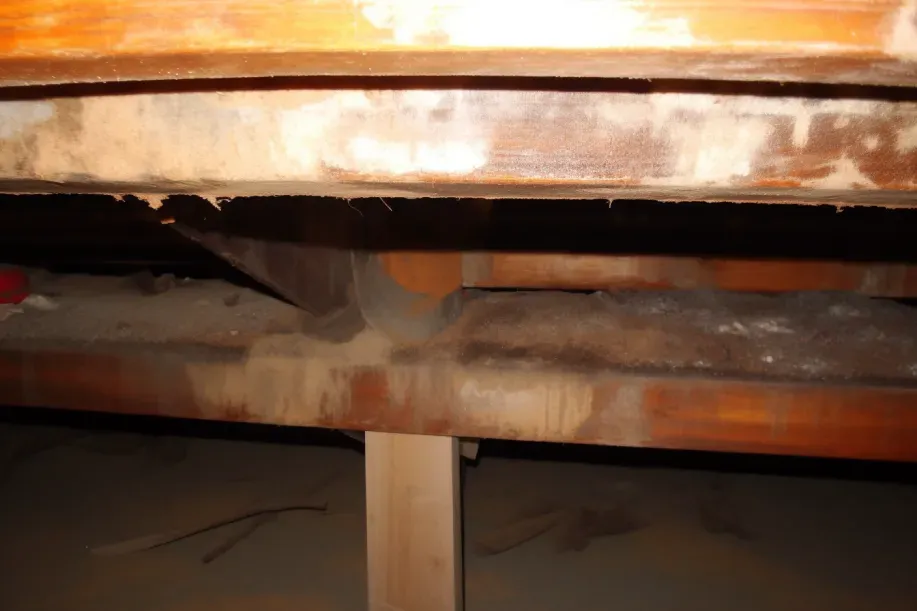Preventing Mold Growth in Crawl Spaces
Crawl spaces, often overlooked and neglected areas beneath our homes, harbor a hidden challenge that many homeowners face: mold growth. These confined spaces, characterized by their limited accessibility and poor ventilation, create an ideal environment for mold to thrive. This blog aims to shed light on the often-unseen world of mold in crawl spaces, unraveling the complexities and risks associated with this common issue.
Mold in crawl spaces is not just a superficial problem; it poses significant risks to both the structural integrity of your home and the health of its inhabitants. The damp, dark conditions of crawl spaces provide the perfect breeding ground for mold, leading to a host of problems ranging from musty odors to serious health concerns. Understanding these challenges is the first step in addressing and preventing mold growth in these critical areas.
However, the key to managing this issue lies in proactive measures. This blog will explore the importance of preventative strategies in combating mold growth in crawl spaces. From maintaining proper ventilation and humidity levels to regular inspections and early intervention, we will delve into practical and effective approaches to keep your crawl space mold-free.
Join us as we navigate the hidden dangers of crawl spaces and arm you with the knowledge and tools necessary to protect your home and health from the insidious threat of mold. Whether you're a new homeowner or have been in your residence for years, this blog offers valuable insights into the proactive steps you can take to ensure a safe and healthy living environment.
Understanding Mold and Its Growth in Crawl Spaces
Mold in crawl spaces is a common yet often overlooked problem in many homes. Understanding the nature of mold and why crawl spaces are particularly vulnerable to it is crucial for effective prevention and remediation. This section of our blog aims to provide readers with essential information about mold and the specific factors that contribute to its proliferation in crawl spaces.
What is Mold?
Mold is a type of fungus that plays a vital role in nature by decomposing organic matter. However, when it grows unchecked in homes, it can become a significant issue. Mold reproduces through tiny spores that travel through the air and can start growing on surfaces under the right conditions. These conditions include:
- Moisture: Mold needs moisture to grow. Leaks, high humidity, or condensation can all provide the necessary moisture for mold growth.
- Food Source: Mold feeds on organic materials like wood, paper, and fabric, which are commonly found in building materials.
- Optimal Temperatures: Mold typically thrives in temperatures that are comfortable for humans, making indoor environments ideal for its growth.
There are various types of mold, each with different characteristics and levels of impact on health and structures. Some common types found in homes include Cladosporium, Penicillium, and Aspergillus.
Why Crawl Spaces are Susceptible to Mold
Crawl spaces are particularly prone to mold growth due to several factors:
- Poor Ventilation: Many crawl spaces lack adequate ventilation, leading to stagnant air and high humidity levels – perfect conditions for mold growth.
- Moisture Accumulation: Crawl spaces are often the first places where moisture from the ground, leaks, or condensation accumulates.
- Organic Materials: The construction materials used in crawl spaces, such as wood and insulation, provide a food source for mold.
- Limited Accessibility: Due to their often cramped and inaccessible nature, crawl spaces may not receive regular cleaning or maintenance, allowing mold to grow undetected.
Understanding these factors is essential for homeowners to recognize the importance of regular inspections and maintenance of their crawl spaces to prevent mold growth.
Key Strategies for Mold Prevention in Crawl Spaces
Preventing mold growth in crawl spaces is crucial for maintaining a healthy home environment. Effective mold prevention in these areas involves controlling humidity and moisture, as well as improving air circulation. This section of the blog provides practical strategies and tips to help homeowners effectively manage these aspects, thereby reducing the risk of mold growth in their crawl spaces.
Controlling Humidity and Moisture
Moisture control is a critical factor in preventing mold growth. Here are some effective ways to reduce and control moisture levels in crawl spaces:
- Use of Dehumidifiers: Installing a dehumidifier in your crawl space can significantly reduce moisture levels. Dehumidifiers work by removing excess moisture from the air, creating an environment that is less conducive to mold growth.
- Proper Ventilation Techniques: Ensuring that your crawl space is properly ventilated is essential for moisture control. Ventilation helps to expel damp air and reduce humidity levels. This can be achieved through natural ventilation (such as vented crawl space doors or windows) or mechanical means (such as exhaust fans).
Improving Air Circulation
Good air circulation is another key strategy in preventing mold in crawl spaces. Here are ways to improve airflow:
- Installation of Vents: Vents play a crucial role in improving air circulation in crawl spaces. Installing vents along the foundation walls allows for the exchange of air inside the crawl space with the outside air, helping to keep the area dry and less hospitable to mold.
- Use of Fans and Air Movers: In addition to vents, using fans or air movers can further enhance air circulation within crawl spaces. These devices help to distribute air evenly throughout the space, preventing stagnant air pockets where mold can thrive.
By implementing these strategies, homeowners can create an environment in their crawl spaces that is less favorable for mold growth. Regular monitoring and maintenance of humidity levels and air circulation are essential for long-term mold prevention in these areas.
Regular Inspection and Maintenance
Regular inspection and maintenance of crawl spaces are vital in preventing mold growth and ensuring the overall health of your home. This section of the blog focuses on guiding homeowners through the process of conducting routine crawl space inspections and outlines a maintenance checklist to help in the early detection and prevention of mold.
Conducting Routine Crawl Space Inspections
Crawl space inspections are crucial for early detection of conditions that may lead to mold growth. Here's how and when to perform these inspections:
- Frequency of Inspections: It's recommended to inspect your crawl space at least twice a year, typically during the spring and fall. This timing allows you to address any issues that arise from seasonal changes in humidity and temperature.
- What to Look For: During an inspection, look for signs of moisture, such as water pooling, leaks, or condensation. Also, check for any signs of mold growth, musty odors, or deterioration in insulation and vapor barriers.
- Safety Precautions: Always ensure safety when entering a crawl space. Wear protective clothing, a mask, and gloves, and ensure adequate lighting.
Maintenance Checklist
Regular maintenance is key to preventing mold growth in crawl spaces. Here are some essential tasks to include in your maintenance routine:
- Checking for Leaks: Regularly check for any signs of leaks from plumbing or external sources. Addressing leaks promptly prevents moisture accumulation, which is a primary cause of mold.
- Inspecting Vapor Barriers: Vapor barriers help control moisture in crawl spaces. Inspect them for any tears, gaps, or deterioration and repair or replace as necessary to maintain their effectiveness.
- Ensuring Proper Ventilation: Verify that vents are clear of obstructions and functioning correctly to maintain good air circulation.
- Cleaning and Debris Removal: Keep the crawl space clean and free of debris. Organic materials can become food sources for mold.
- Monitoring Humidity Levels: Use a hygrometer to monitor the humidity levels in your crawl space, keeping them below 50% to inhibit mold growth.
By following this maintenance checklist and conducting regular inspections, homeowners can significantly reduce the risk of mold growth in their crawl spaces, contributing to a healthier and safer home environment.
Addressing Common Moisture Sources
Managing moisture is a critical aspect of maintaining a healthy crawl space and preventing mold growth. This section of the blog focuses on identifying and addressing common sources of moisture, particularly leaks and external water sources, which are often the primary culprits in crawl space moisture problems.
Identifying and Fixing Leaks
Leaks in crawl spaces can go unnoticed for long periods, leading to significant moisture problems. Here's how to find and repair these leaks:
- Regular Inspections: Conduct thorough inspections of your crawl space regularly, looking for signs of leaks such as wet spots, dripping water, or stained surfaces.
- Identifying the Source: Trace the source of any leak. This could be from plumbing, cracks in the foundation, or seepage from the ground.
- Repairing Leaks: Once identified, promptly repair leaks. This may involve fixing broken pipes, sealing cracks in the foundation, or applying waterproof coatings. For complex issues, it's advisable to consult with professionals.
Managing External Water Sources
Effectively managing external water sources is crucial in keeping your crawl space dry. Here are strategies for diverting water away from your home's foundation:
- Proper Landscaping: Ensure that the ground around your home slopes away from the foundation. This helps in directing surface water away from the crawl space. Additionally, choose landscaping designs and plants that do not retain moisture near the foundation.
- Gutter and Downspout Maintenance: Gutters and downspouts play a vital role in managing roof runoff. Keep them clean and free of debris to ensure they function effectively. Extend downspouts so that they direct water at least five feet away from the foundation. Consider installing gutter guards to reduce maintenance.
By addressing these common moisture sources, homeowners can significantly reduce the risk of moisture buildup in their crawl spaces. Regular maintenance of both internal and external water management systems is key to preventing the conditions that lead to mold growth.
Utilizing Mold-Resistant Materials and Practices
In the battle against mold in homes, especially in areas like crawl spaces, the choice of materials and construction practices plays a pivotal role. This section of the blog focuses on guiding homeowners and builders in selecting mold-resistant building materials and employing construction techniques that minimize the risk of mold growth.
Choosing Mold-Resistant Building Materials
Selecting the right materials is crucial in preventing mold growth in your home. Here are some recommendations for mold-resistant building materials:
- Mold-Resistant Drywall and Sheetrock: Traditional drywall can be susceptible to mold because of its gypsum core. Opt for mold-resistant drywall, which is treated with mold inhibitors and has a fiberglass face instead of a paper face that mold can feed on.
- Non-Porous Materials for Flooring: In areas prone to moisture, consider using non-porous flooring materials like tile, slate, or vinyl. These materials are less likely to harbor mold compared to carpet or hardwood.
- Mold-Resistant Paints: These paints contain antimicrobial agents that prevent mold growth. They are particularly useful in high-moisture areas like bathrooms and kitchens.
- Moisture-Resistant Insulation: Choose insulation materials that resist moisture absorption, such as foam board or closed-cell spray foam insulation.
Best Practices in Construction and Repair
The way a home is constructed or repaired can significantly impact its susceptibility to mold. Here are some construction techniques that help minimize the risk:
- Proper Ventilation: Ensure adequate ventilation in all areas of the home, especially in crawl spaces, bathrooms, and kitchens. This can involve installing vents, exhaust fans, or using ridge and soffit venting in attics.
- Moisture Barriers: In crawl spaces and basements, use moisture barriers on walls and floors to prevent ground moisture from entering the space.
- Sealing and Caulking: Properly seal and caulk around windows, doors, and where different materials meet to prevent water intrusion.
- Elevating Equipment: In flood-prone areas, consider elevating critical equipment such as HVAC systems above potential flood levels.
By incorporating these mold-resistant materials and construction best practices, homeowners and builders can significantly reduce the risk of mold problems, ensuring a healthier and more durable living environment.
FAQs
Contact Lowcountry Crawlspaces Today!
Lowcountry Crawlspaces will do everything we can to ensure your experience with us is excellent.
Request A FREE Estimate
CHECKOUT RECENT POST



Schedule Your FREE Crawl Space Evaluation Today
There Is No Crawl Space Job We Can’t Fix!




